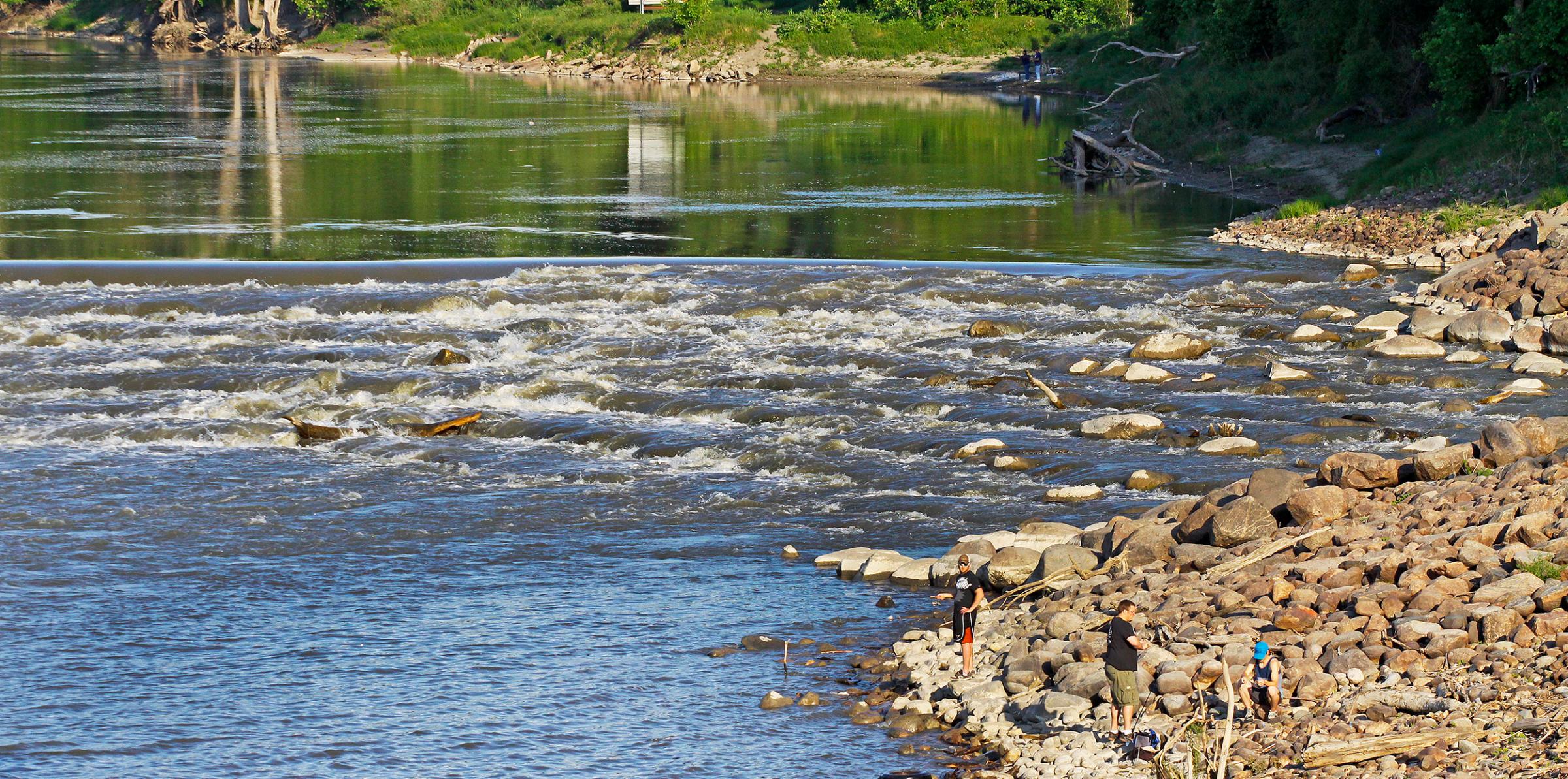
State Agencies Work Together to Eliminate “Drowning Machines”
Starting over a century ago, many lowhead dams were built throughout North Dakota for use in livestock watering, irrigation, water supply and recreation.
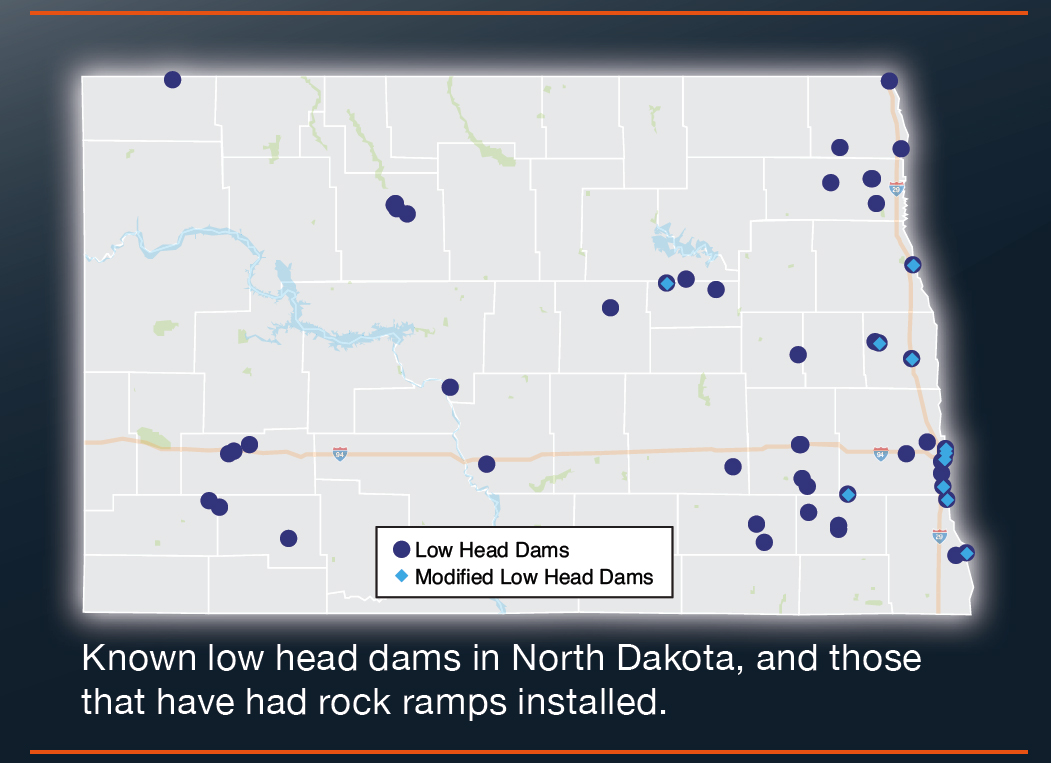
Known lowhead dams in North Dakota, and those that have had rock ramps installed.
Lowhead dams are usually simple concrete or rock masonry structures that span the width of a river or stream, raising the water level behind them until it reaches a height sufficient to flow over the dam.
One of the unintentional consequences that materialized is that these lowhead dams created dangerous conditions that recreational river users may not be aware of or may underestimate.
Under the right conditions, water flowing over the dam can cause a “roller effect” on the downstream side of the dam. Strong recirculating currents can trap and drown boaters, swimmers, or other water users. Air mixing in the turbulent water below the dam reduces buoyancy, making it more difficult to stay afloat even with a life jacket.
The dangers are such that in the early 1980s the North Dakota Game and Fish Department closed the area 150 feet below the lowhead dam at Drayton on the Red River, at the request of local officials, because the area had accumulated 11 drownings over the years.
Karen Goff, the State Water Commission’s dam safety program manager, says that “One of the problems with these dams is that the level of danger can change depending on the flow conditions in the river. Hazardous conditions may not exist at a dam all the time, potentially giving people a false sense of security. What may be a pleasant, inviting looking place on one day can be very dangerous on another day under different conditions.”
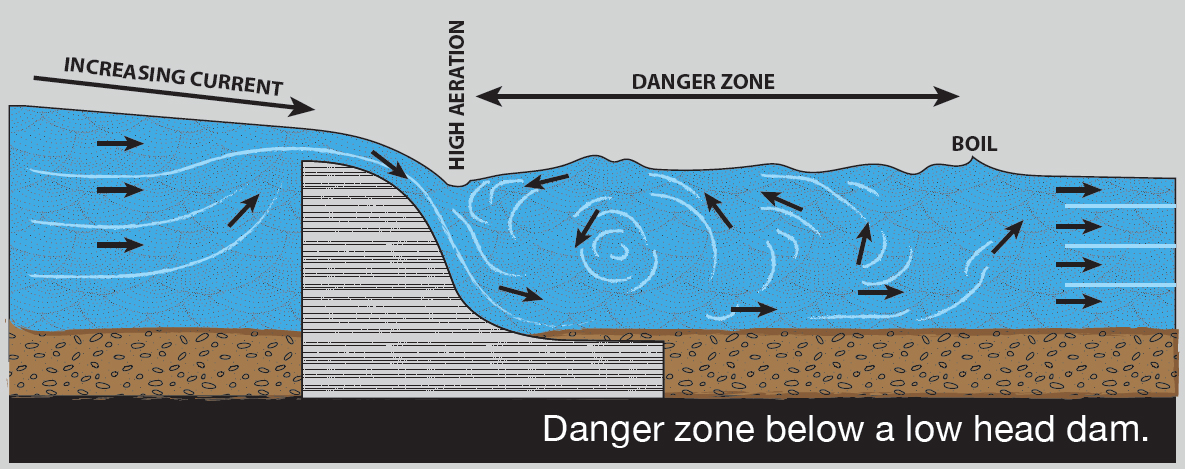
According to the Association of State Dam Safety Officials, each year, dozens of lives are lost at dams on U.S. streams and rivers, many at lowhead dams, also known as run-of-river dams or “drowning machines.”
“These structures, generally less than 15 feet high, can create backflow currents and turbulence capable of producing disorientation, hypothermia, exhaustion, and brutal battering. The forces combine to create a practically inescapable circular trap for even the strongest, life-jacket-clad swimmer.”
Nationwide, many deaths at lowhead dams occur when people have drowned attempting to rescue someone else, or even dogs. Even trained rescue personnel have fallen victim to lowhead dams.
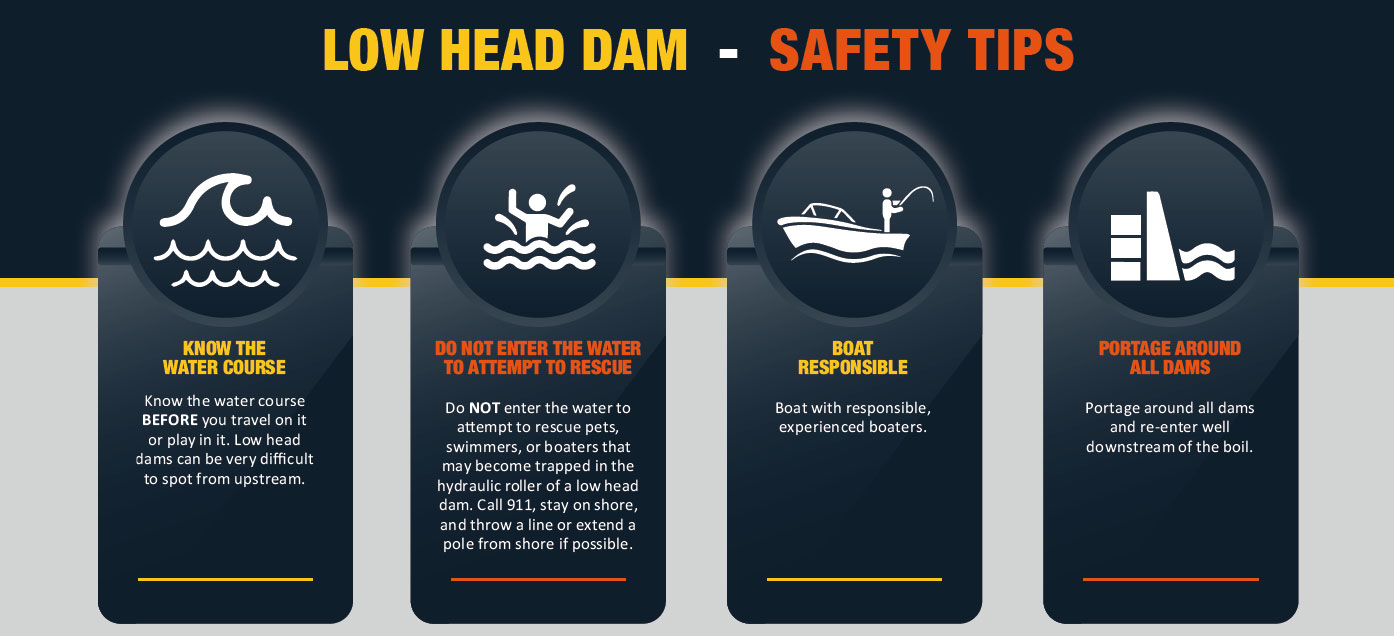
Options to eliminate the public safety concerns associated with lowhead dams include removing the dam, or modifying the dam to eliminate the dangerous conditions. In some instances, removal of a lowhead dam isn’t a desirable option for local entities.
“For those dams that are still serving a purpose, the installation of a rock ramp on the downstream side of a lowhead dam alters how the river flows, so that the ‘drowning machine’ effect is no longer an issue,” said Greg Power, North Dakota Game and Fish Department fisheries chief. “If done correctly, rock ramps also allow fish to freely move up and downstream, where before the dam served as a barrier to fish travel. Connectivity of the river system as a whole can be vitally important for a healthy aquatic community.”
Multiple agencies and groups in North Dakota have made progress toward eliminating these public safety hazards. To date in North Dakota, one lowhead dam has been removed, and 11 have had rock ramp fish passages installed.
“We know of 41 lowhead dams that remain in North Dakota,” Goff said. “Removal or modification of these dams should be considered to make them safer.”
Because lowhead dams are at times dangerous, the State Water Commission and Game and Fish Department are supportive of local entities interested in removing structures that no longer serve any purpose, or installing improvements, such as rock ramp fish passages, on dams that are still necessary. Under the Water Commission’s cost-share program, local dam owners can get up to 75 percent of their project covered by the state, if dam safety concerns exist.
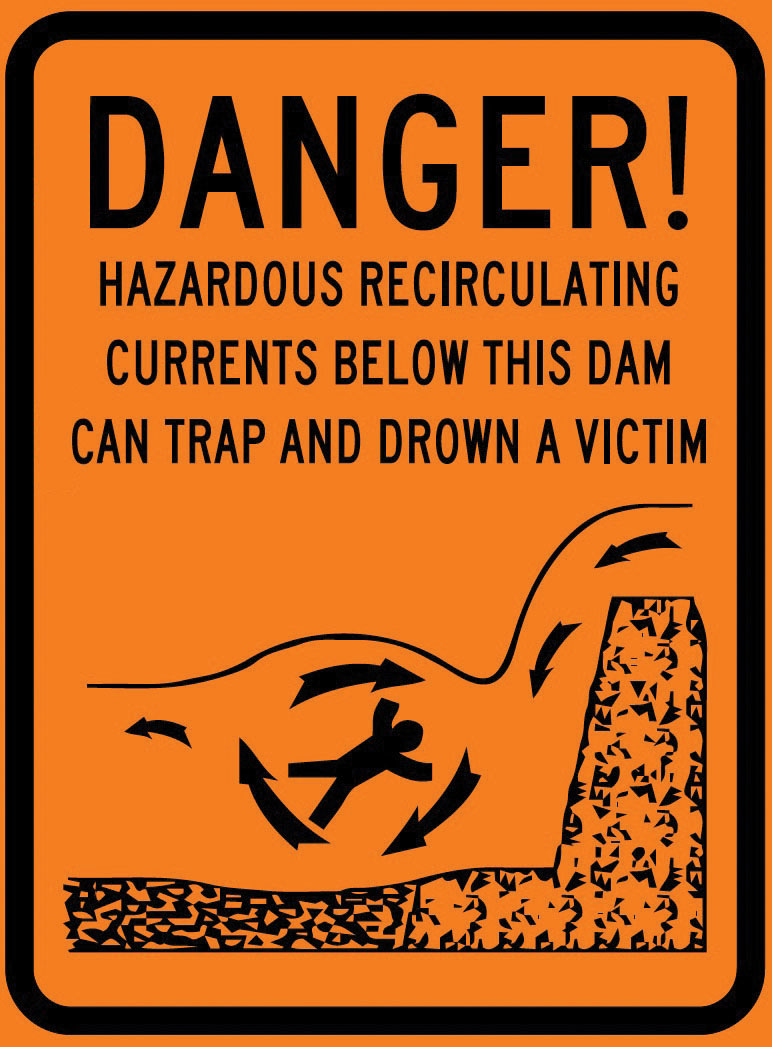
In the coming years, the State Water Commission and Game and Fish Department will continue to provide education and will work with local dam owners to reduce risk and improve riparian habitat by providing cost-share to convert lowhead dams statewide.
As part of the state’s education efforts, the State Water Commission has purchased signs that are available free of charge to dam owners who want to install them at lowhead dams. For more information on the free dam safety signs, call 701-328-2782, or email jessiewald@nd.gov .
For additional information on lowhead dams visit ASDSO’s website at https://damsafety.org/public-awareness.
Article courtesy of the North Dakota State Water Commission.
Top photo: Riverside Dam in Grand Forks was one of the first lowhead dams modified in the state. Of eight such dams built on the Red since the early 1900s, seven have been modified to reduce safety concerns and allow for better fish passage. Elsewhere, more than 40 lowhead dams still exist in their original state.
